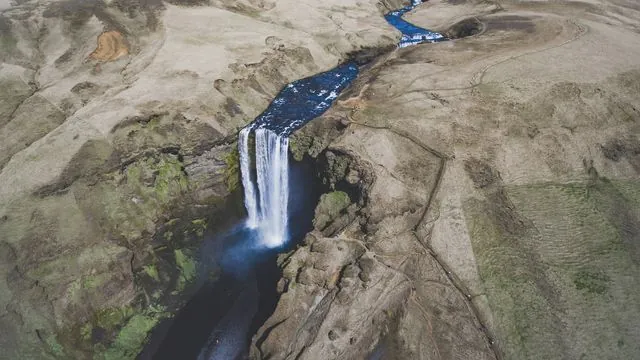
Shocking New Study Reveals Carbon Emissions from U.S. Lakes and Rivers May Be Significantly Overestimated!
2024-11-05
Author: Daniel
Groundbreaking Study Uncovers Startling Revelations
A groundbreaking study has uncovered startling revelations about carbon emissions from U.S. lakes and rivers, suggesting that previous assessments may have been overestimated by as much as 25%! This surprising discovery could shift our understanding of the carbon cycle and its implications for climate change.
Turbulence and CO2 Emissions
Research led by experts in the field has highlighted that turbulent streams release carbon dioxide (CO2) into the atmosphere much faster than calmer waters. “When you have a really turbulent stream, it’s going to de-gas a lot faster,” explains researcher Michael Winnick. The team found that smaller headwater streams absorb more CO2 from underground sources compared to those further downstream, leading to discrepancies when aggregating data across different types of waterways. “Aggregating these really steep mountain reaches in with low slope areas just misses a lot of information,” Winnick further clarifies.
Innovative Modeling Approach
In an innovative approach, researchers developed an alternative model that individually simulates carbon dynamics in each stream segment, rather than treating all similar bodies of water as one. This new perspective on carbon emissions has already demonstrated its effectiveness. Initially tested in the East River watershed of Colorado, the model's creators—Winnick and co-lead author Brian Saccardi, who is a former graduate student—collaborated with civil and environmental engineering specialists Colin Gleason and Craig Brinkerhoff to expand their research to encompass 22 million stream reaches across the United States.
Eye-Opening Results
Their results were eye-opening. The new model estimates that emissions from these waterways amount to approximately 120 million metric tons of carbon, compared to the previous standard estimate of 159 million metric tons. This reduction of 25% has significant implications for understanding the overall carbon budget on a continental scale, particularly regarding mountainous regions, which surprisingly exert a powerful influence on CO2 emissions.
Implications for Carbon Sequestration Efforts
One area that could directly benefit from these more accurate emissions estimations is carbon sequestration efforts. Researchers like Winnick point out that projects aimed at enhancing river systems by adding calcium carbonate to convert CO2 into a more stable form rely heavily on accurate knowledge of existing carbon levels in these waterways. “If we want to know if these methods can work, we need to know how much CO2 is in these river systems,” he emphasizes, noting that CO2 levels can fluctuate dramatically even in short distances along streams.
Debate on CO2 Emission Sources
Additionally, there’s an ongoing debate about the sources of CO2 emissions—specifically, whether they come primarily from groundwater or from the stream corridors themselves. Understanding the origins of carbon will be essential in making predictions about how emissions might change in response to climate change, as different environments react uniquely to altering temperature and precipitation patterns. Winnick’s research leans towards the idea that emitting CO2 likely originates from stream corridors and near-stream sediments, but he acknowledges that this remains an open question.
Critical Implications for Climate Science
The implications of this research are critical for climate science and the ongoing battle against climate change. As methods to predict and manage carbon emissions from aquatic ecosystems evolve, experts hope this study will inspire further investigations and ultimately lead to more effective climate change mitigation strategies.
Future Research Directions
Stay tuned as more findings are expected to unfold from this vital area of research, potentially reshaping our environmental policies and carbon management tactics for the future!



 Brasil (PT)
Brasil (PT)
 Canada (EN)
Canada (EN)
 Chile (ES)
Chile (ES)
 España (ES)
España (ES)
 France (FR)
France (FR)
 Hong Kong (EN)
Hong Kong (EN)
 Italia (IT)
Italia (IT)
 日本 (JA)
日本 (JA)
 Magyarország (HU)
Magyarország (HU)
 Norge (NO)
Norge (NO)
 Polska (PL)
Polska (PL)
 Schweiz (DE)
Schweiz (DE)
 Singapore (EN)
Singapore (EN)
 Sverige (SV)
Sverige (SV)
 Suomi (FI)
Suomi (FI)
 Türkiye (TR)
Türkiye (TR)